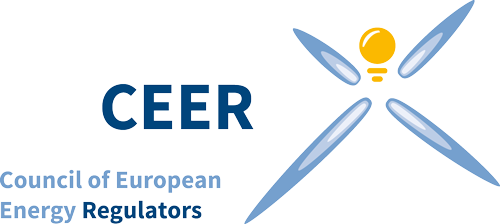November 2010
| | |
| European Energy Regulators’ News | |
| Issue: November 2010 | |
| If this e-mail is not displayed correctly, please click here! | |
| | Editorial ERGEG published a report on the different congestion management mechanisms and anti-hoarding mechanisms currently applied at European LNG terminals. It focuses on the need for harmonisation and transparency at the EU level. ERGEG’s evaluation of ENTSOG’s European Ten-Year Network Development Plan (TYNDP) 2010-2019 recommends that a top-down model-based scenario analysis be used also in future TYNDPs (this the first gas TYNDP was based on a bottom-up approach only). ERGEG has also launched a call for evidence regarding an EU gas target model. Success in regional and inter-regional energy market integration is the topic of this month’s feature article. This is particularly timely given that the inter-regional market coupling between the CWE and Nordic markets went live on 9 November. The short feature in this newsletter gives a flavour of some of the achievements (further detail,region by region and topic by topic, is set out in the Status Review on the ERGEG Regional Initiatives 2010 published this month). In the regional spotlight this month, rather than focusing on one of the regions, we demonstrate how the ERGEG Electricity Regional Initiative is leading to transparency across the seven electricity regions. |
| Feature: Success in regional and inter-regional energy market integration | |
| Aim of the Regional Initiatives Achievements – electricity In electricity there are important and concrete results particularly with regard to capacity calculation, capacity allocation and congestion management. Some regions have in place single auction platforms (Central-West and Central-East) and others are moving in that direction. A key development is a new interregional dimension with extension of price coupling to the whole Central-West region (9 November 2010) and simultaneously the harmonisation of two regional market coupling projects (Central-West electricity region and the Northern market). These are important steps towards the target of pan-European price coupling by 2014. In January 2010 the European Commission mandated ERGEG to elaborate proposals for guidelines on fundamental data transparency in electricity. The regional transparency reports (developed in six regions) are an extremely valuable basis for this work (see Region in the spotlight section of this newsletter). Achievements – gas From regional market integration towards a single EU energy market How the Regional Initiatives fit in with the European Commission's Infrastructure Package Future Prospects – the Regional Initiatives under ACER |
| CEER/ERGEG Events |
| Press Release: • Success in regional and inter-regional energy market integration (10 November 2010) • European Energy Regulators welcome the European Commission’s Communication on Infrastructure (19 November 2010) Publications: • Status Review on the ERGEG Regional Initiatives 2010 (Ref. E10-RIG-11-03 ) • ERGEG study on congestion management procedures & antihoarding mechanisms in the European LNG terminals (Ref: E10-LNG-11-03) • Evaluation of ENTSOG’s European Ten Year Network Development Plan 2010-2019 (Ref: E10-GIF-01-04) Events (see Events section of website for the new calendar of next workshops) |
| Calendar of current and future public consultations |
The standard period for ERGEG public consultation is 8 weeks. See the public consultations section of the website.
| Events |
| See all dates of Regional Initiatives meetings (RCC, IG, SG) on the ERGEG online Calendar. |
|
|
| Region in the Spotlight - How the Electricity Regional Initiative is leading to transparency improvements |
| Providing transparent and reliable information to market players is a key element for efficient and competitive markets. The purpose of transparency on physical information is to support security of supply, facilitate (regional) market development for making energy markets more efficient, foster competition, and provide additional (partly price sensitive) information in order to prevent insider trading and market abuse. |
| About the European Energy Regulators' News |
| Reported content is given for information purposes only and does not legally bind any of the involved parties. Where third-party sources are mentioned, CEER/ERGEG is not responsible for the accuracy of the information. Your feedback on European Energy Regulators’ News is welcome, so as to improve future issues. Contact: una.shortall@ceer.eu |
